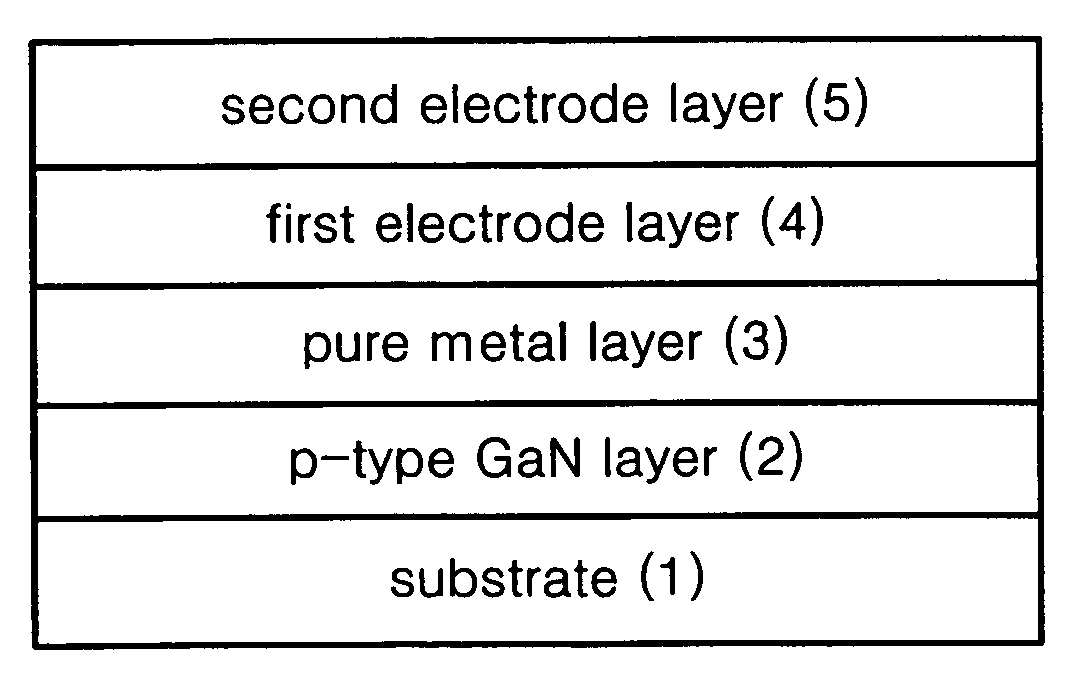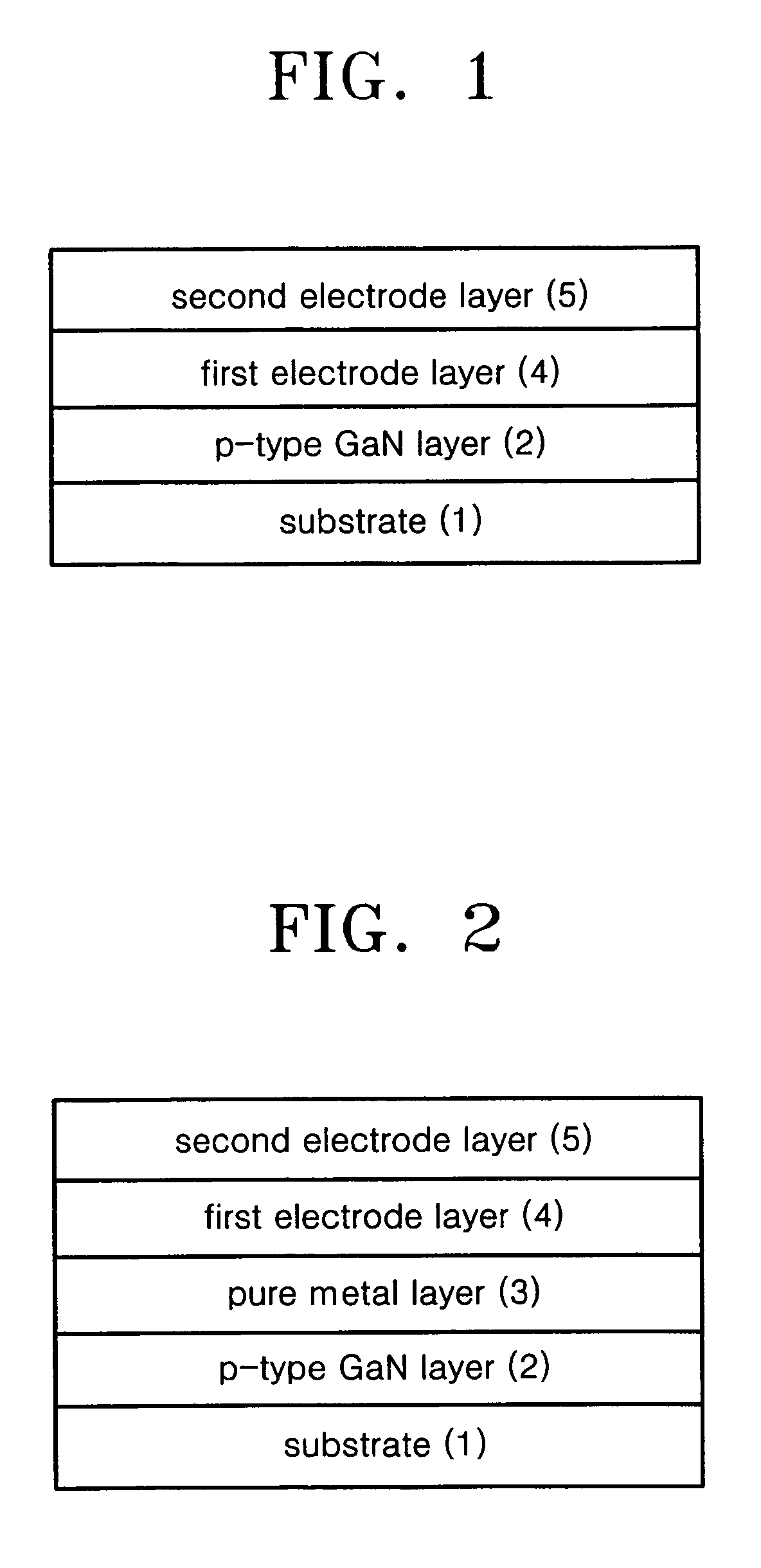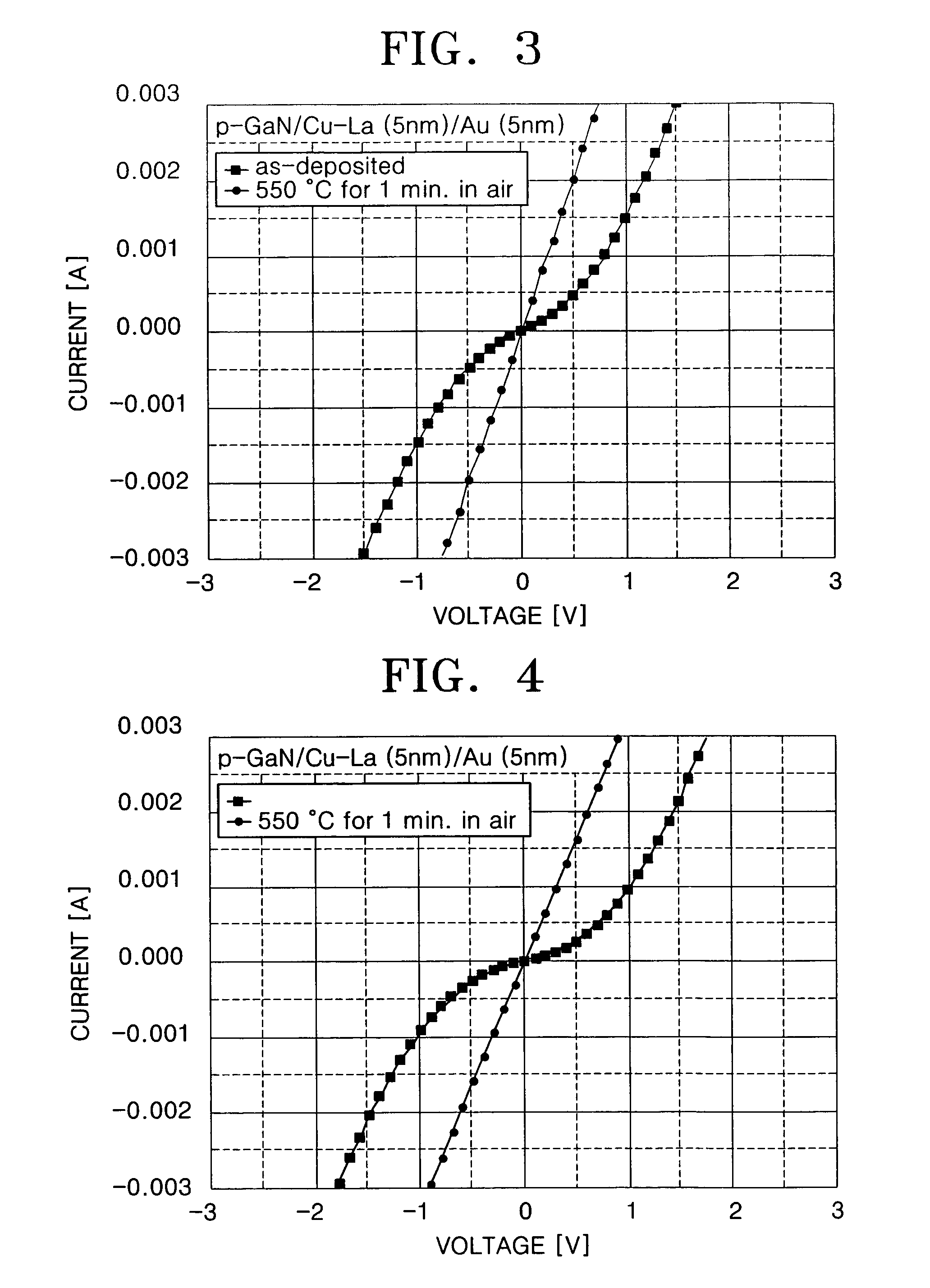Thin film electrode for high-quality GaN optical devices
a technology of optical devices and thin films, applied in the direction of resistive material coating, solid-state devices, metallic material coating processes, etc., can solve the problems of low effective carrier density and high surface resistance value, difficult to form high-quality ohmic contacts, and gan ohmic contact of type gan, etc., to achieve the effect of reducing the height and width of the schottkey barrier between the p-type thermo-electronic oxide and the p-typ
- Summary
- Abstract
- Description
- Claims
- Application Information
AI Technical Summary
Benefits of technology
Problems solved by technology
Method used
Image
Examples
experiment 1
[0059]A surface of the p-type GaN semiconductor is cleaned with trichloroethylene, acetone, methanol, and pure water within an ultrasonic wave cleaner at a temperature of 60° C. for five minutes. Then, hard baking is performed at 100° C. for 10 minutes so as to remove any water remaining in the specimen. Thereafter, a photoresist is spin-coated at 4,000 rpm, which is then soft baked at a temperature of 88° C. for 10 minutes. After aligning the mask and specimen so as to develop a mask pattern, they are exposed to ultraviolet rays at an intensity of 22.8 mW for 10 seconds. The specimen is sintered in a solution obtained by mixing a development solution and distilled water in a ratio of 1:4, thereby being developed for 15 seconds or so.
[0060]Then, the resultant structure is sintered for 5 minutes in order to eliminate a contaminated layer on the developed specimen using a buffered oxide etch (BOE) solution. Using an electron beam depositor, a Cu—La solid solution and Au are respective...
experiment 2
[0061]The process until depositing an electrode material using an electron beam depositor is identical with that of the foregoing Experiment 1. Here, the electron beam depositor is used for stacking a Pd / Cu—La solid solution / Au combination to a thickness of 50 Å, respectively. Lift-off is performed using acetone. The specimen is put in a quick heater at 550° C. for 1 minute in an air environment, thereby fabricating a metal thin film of forming the ohmic contact.
[0062]According to the present invention, the transparent p-type thermo-electronic conductive oxide thin films for LEDs and LDs of high efficiency using the ohmic contact formation may effect excellent electrical and optical characteristics such as low specific contact resistance, excellent current-voltage characteristics, a good surface condition, and high transparency. Therefore, the electric and optical efficiencies of future LEDs and LDs are increased so that the transparent p-type thermo-electronic conductive oxide thin...
PUM
| Property | Measurement | Unit |
|---|---|---|
| temperature | aaaaa | aaaaa |
| temperature | aaaaa | aaaaa |
| temperature | aaaaa | aaaaa |
Abstract
Description
Claims
Application Information
 Login to View More
Login to View More - R&D
- Intellectual Property
- Life Sciences
- Materials
- Tech Scout
- Unparalleled Data Quality
- Higher Quality Content
- 60% Fewer Hallucinations
Browse by: Latest US Patents, China's latest patents, Technical Efficacy Thesaurus, Application Domain, Technology Topic, Popular Technical Reports.
© 2025 PatSnap. All rights reserved.Legal|Privacy policy|Modern Slavery Act Transparency Statement|Sitemap|About US| Contact US: help@patsnap.com



